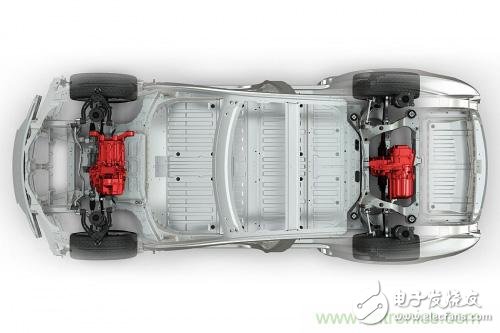
The construction of the dynamometer is very simple. It consists of a cabinet and a test bench. The test bench is often called a dynamometer. It is generally a model in which the torque and speed sensors are integrated into one. The test bench includes a mounting base, a torque speed sensor, a mechanical load (brake), a torque load for the motor test, and simulates different working conditions of the motor; the cabinet includes an electrical parameter tester, a motor tester, a dynamometer controller, Power supply, etc., used to drive the system and test the motor.

Then why is it that traditional dynamometers cannot meet the needs of new industries, such as electric vehicle motors? This is mainly to talk about a core component of the dynamometer - the mechanical load (brake). The mechanical load of the dynamometer generally uses a brake or a motor, which is used to provide a reverse rotation torque to the motor under test, absorb the power of the motor under test, and realize the "loading" of the motor under test to simulate its actual operation. Working condition.
To simulate the actual operating conditions of the motor under test, the loading capacity of the dynamometer must cover the entire operating range of the motor under test, in order to meet the requirements of the simulation "all working conditions". To put it simply, the TN curve of the mechanical load of the dynamometer must cover the TN curve of the motor under test so that the TN characteristics of the tested motor can be tested.
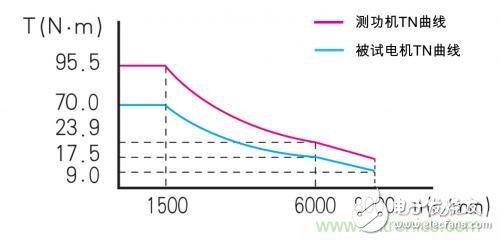
However, the problem is that the TN curve of an electric vehicle motor is different from that of an ordinary motor, and has the characteristics of a constant power region (generally constant power region can reach 80% to 100% of the peak speed) and a high peak speed (above 10000 rpm). This means that the electric vehicle motor can achieve high speed and small torque conditions, as well as low speed and high torque conditions, and puts very high requirements on the TN characteristics of the dynamometer.

At this time, we found that if the TN curve loading of the electric vehicle motor is to be satisfied, the ordinary dynamometer cannot be satisfied at all. Because ordinary dynamometers are generally loaded with hysteresis brakes, eddy current brakes, magnetic powder brakes or variable frequency motors, and the characteristic curves of these mechanical loads each have their own short board:
Magnetic powder brake: can output a large torque, but generally can only run below the low speed (1000rpm), only for high torque, low speed motor test occasions. It can be biased to the electric vehicle motor, especially the passenger car motor, and the speed of tens of thousands of rpm is used to make the magnetic powder brake directly out.
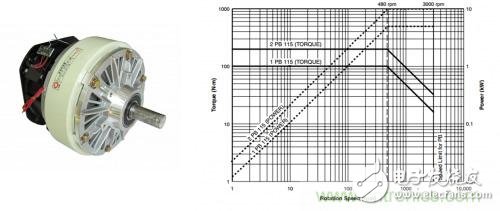
Hysteresis brake: In contrast to magnetic powder, it can output very high speed, but the output torque receives a lot of limitations and can only output small torque (within 100N.m). For low-speed and high-torque conditions of electric vehicles (torque output of 200~500N.m is very common), hysteresis can not meet the demand.

Eddy current brake: Supports high torque and high speed torque output, but within the rated speed range (generally 2600~3000rpm), the torque output and speed output are directly proportional to the low speed (several hundred rpm). High torque output.
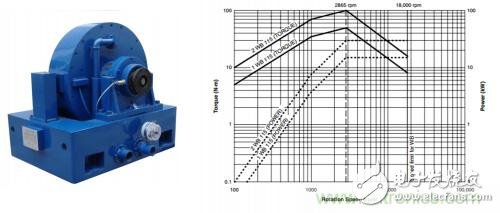
For the case of electric vehicle motor test, the current better solution is to use a high-speed asynchronous motor loading scheme, with a motor with the same constant power range and high peak speed as the loading load. This scheme can customize different dynamometer-specific motors as test loads according to the specific test range of the user, and ensure that the loading range of the mechanical load covers the motor under test.
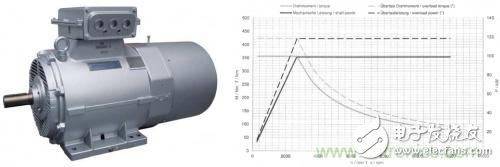
It can be seen that the traditional dynamometer is not used in the electric vehicle industry, and the best solution for the current industry of high-speed motor load motor test systems.
Of course, not all electric dynamometers are suitable for electric vehicle motor test systems. There are two points to note:
1. The traditional electric dynamometer uses ordinary variable frequency motor to do mechanical load, and the constant power range is also wide, but the peak speed is not high, generally only up to 6000 rpm, which does not meet the high-speed test needs of the electric vehicle industry.
2, many users feel that as long as the same high-speed motor as a load can meet the test, use the same motor as the test motor to do the drag, I think this can save a stroke. But this application also has limitations. Electric motor motors currently use permanent magnet synchronous motors, which have large torque fluctuations. When used to test load motors, they cannot provide stable torque output, resulting in consistent test results. The high-speed asynchronous motor used in the special electric vehicle test system has its own torque fluctuation (mainly caused by the current fluctuation of the inverter. If the inverter quality is good, it is very small compared to the torque fluctuation of the motor under test. It can be used to ensure the stability of the test results while testing, and also provide the torque fluctuation waveform of the motor under test.

Molded Waterproofing Cable Assemblies
We specialize in waterproofing products overmolding. We can custom build, custom mold, and over-mold your cable designs.
We specialize in molded cable manufacturing for the widest diversity of
cable and connector types, across the whole spectrum of industries. Rich expeirence in developing and proposing solution Special for IP67, IP68 waterproofing products.
Molded waterproofing cable assemblies, waterproof wire harness, waterproofing cables overmolding
ETOP WIREHARNESS LIMITED , http://www.oemmoldedcables.com